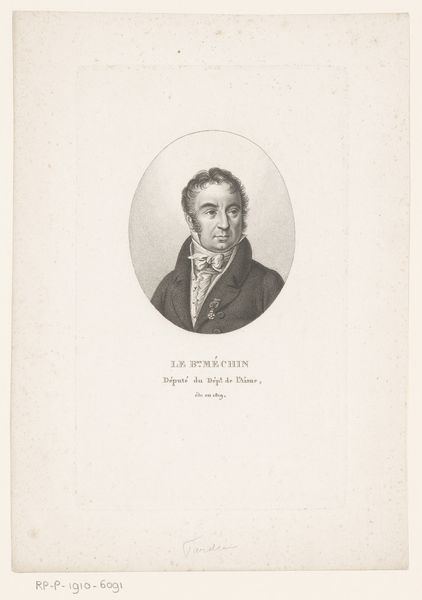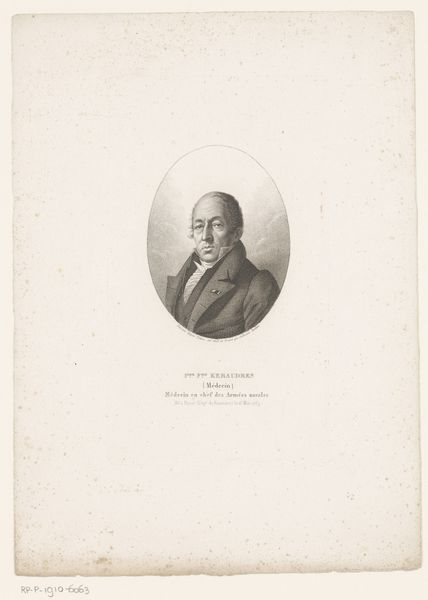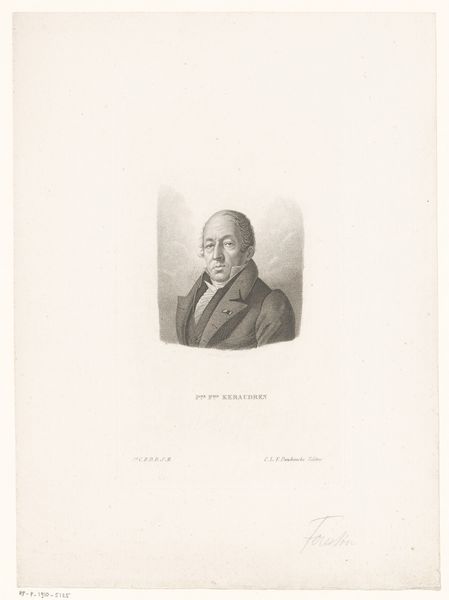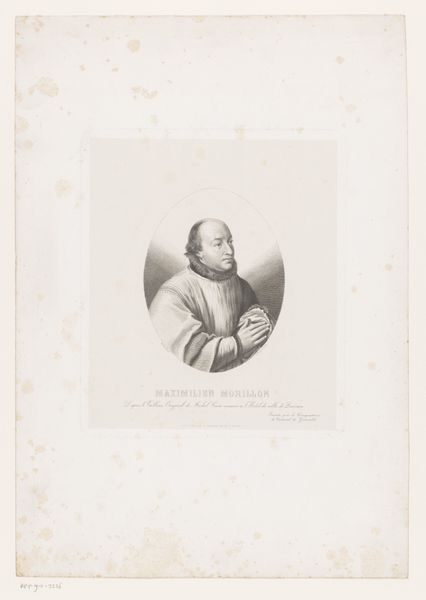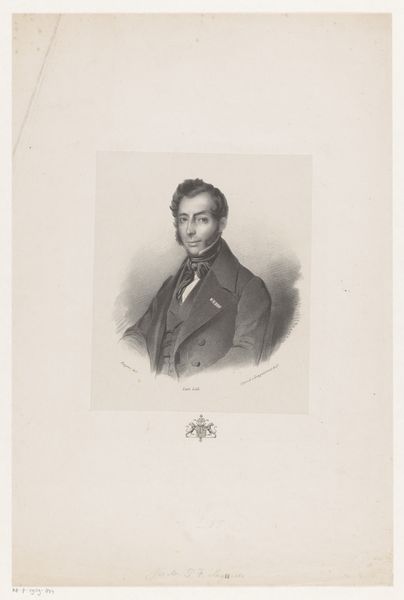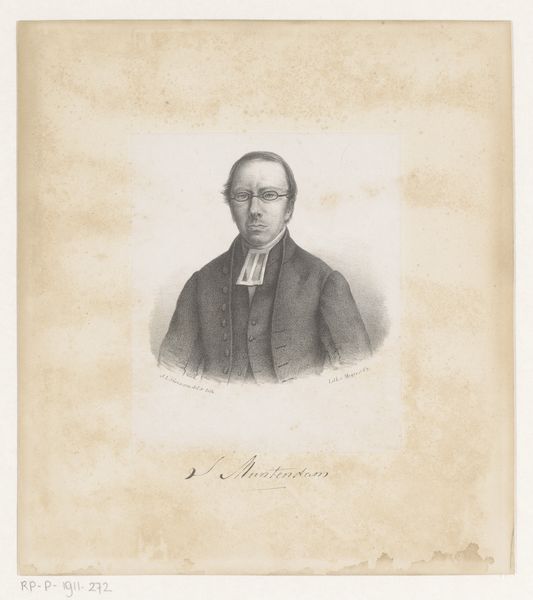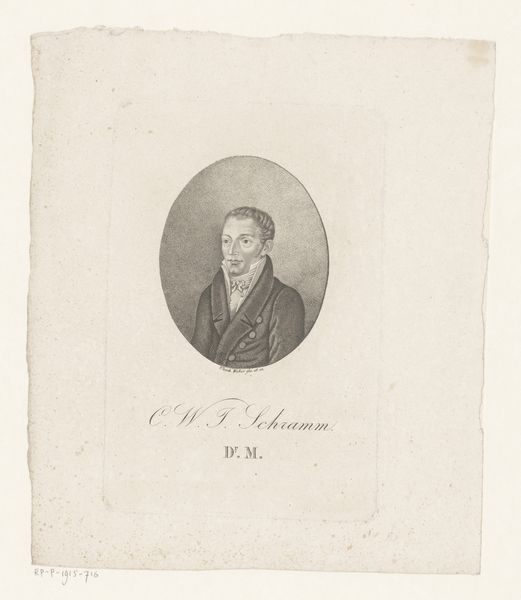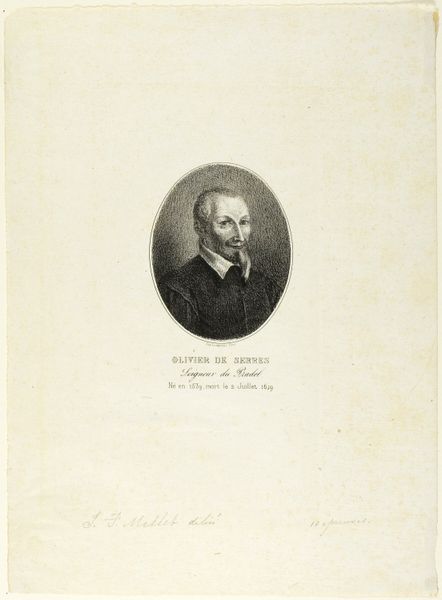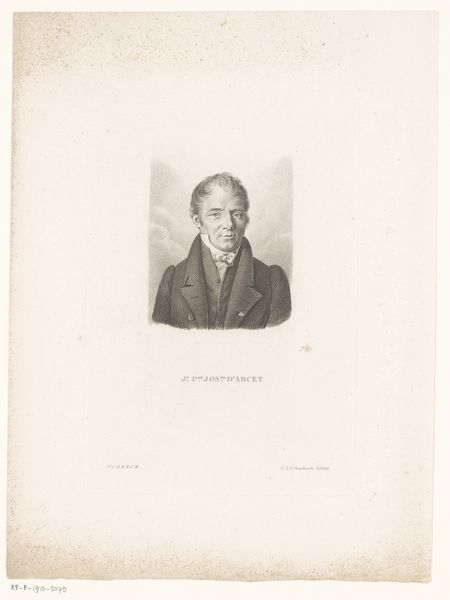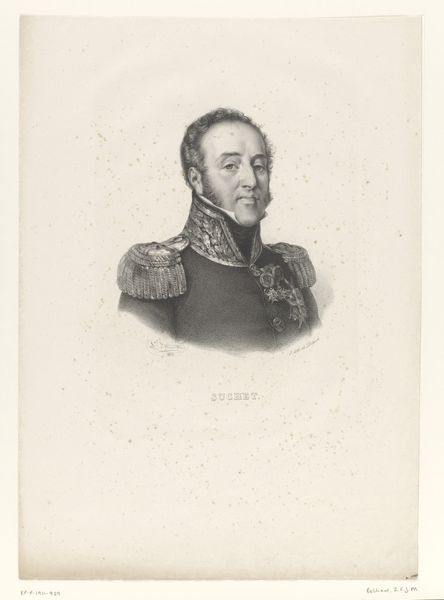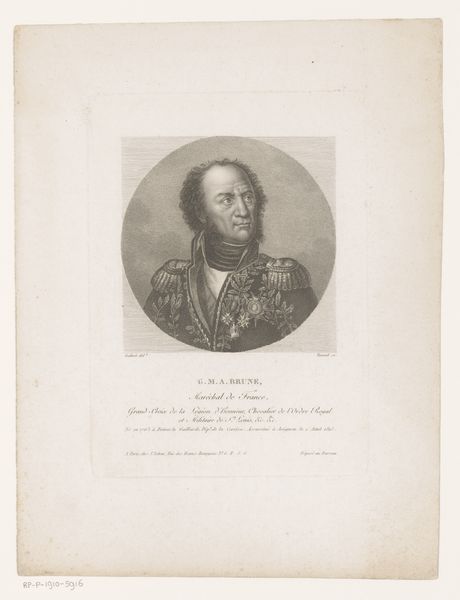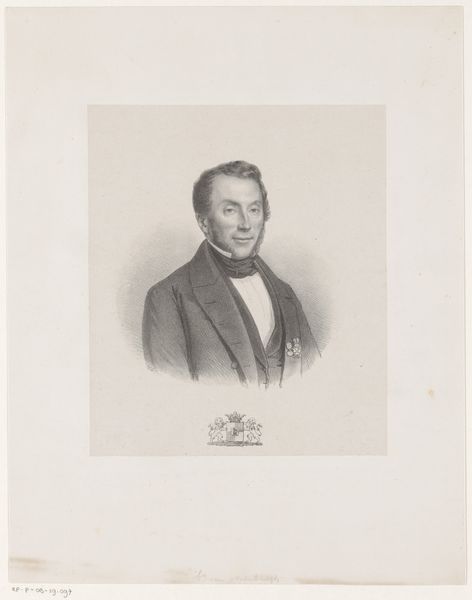
drawing, print, paper, pencil, graphite, engraving
#
portrait
#
drawing
#
neoclacissism
#
aged paper
#
light pencil work
# print
#
old engraving style
#
white palette
#
paper
#
pencil
#
graphite
#
engraving
Dimensions: height 209 mm, width 137 mm
Copyright: Rijks Museum: Open Domain
Curator: Here we have an early 19th-century portrait of François-Marie Borgnis-Desbordes, dating from 1820 to 1821. This work, by Ambroise Tardieu, is a print, employing both pencil and graphite engraving on paper. Editor: It's striking how immediate the gaze feels. His expression is very present, almost confrontational, despite the delicate lines of the engraving and the softening effect of age. There's a kind of quiet confidence there, wouldn't you say? Curator: Indeed. And portraits like this one played a significant role in shaping the public image of influential figures. As a "Député," Desbordes would have been quite conscious of the messages it conveyed. The clean lines, the formal pose, all reinforced his status and respectability within the Neoclassical artistic conventions that had social resonance at the time. Editor: Conventions. Right. But the artist also captured something undeniably human in those eyes. Maybe the old engraving style does that: it's almost photorealistic while remaining incredibly artistic. Curator: Exactly. This speaks to the purpose of portraiture at the time. It was not just to reproduce a likeness but to idealize and present the subject in a light most suitable for posterity and the social hierarchy. We see echoes of that even now in political photography. Editor: So, what's he thinking, our Monsieur Desbordes-Borgnis? What kind of political games is he up to? Curator: That's the question isn't it? I suppose one can try to decipher it through analyzing his legacy in French history... but what this image also tells us is that we can consider how people choose to be presented, both then and now. Editor: Right you are. Gives one food for thought on authenticity, performance and visual politics. That man's portrait speaks to much more than he intended! Thanks for walking me through this one! Curator: My pleasure. These encounters between art and history never fail to remind me how intertwined personal stories are with broader cultural currents.
Comments
No comments
Be the first to comment and join the conversation on the ultimate creative platform.
